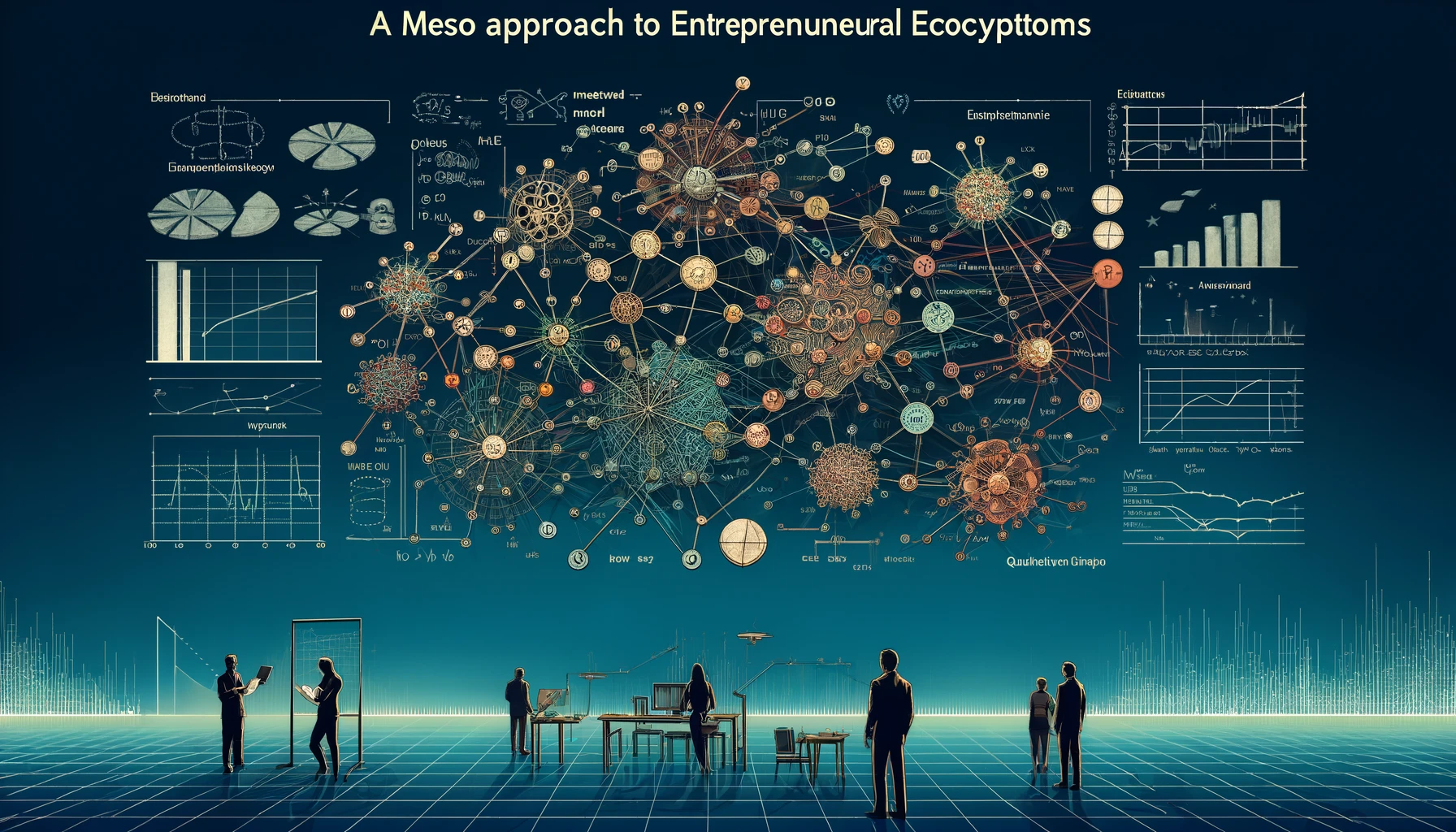by admin
Share
by admin
Share

Entrepreneurial ecosystems (EE) is now a prominent topic in entrepreneurship research (Acs et al., 2017; O’Connor et al., 2018; Volkmann et al., 2019). The concept has rapidly seduced policy makers (Stam, 2015), leading mainly to a theorization at a macro-level of analysis (Malecki, 2018). However scholars have criticized this concept (Acs et al., 2016; Cunningham et al., 2019; Acs et al., 2016; Cunningham et al., 2019) ; facing ‘superficial generalisations’ (Stam and Spigel, 2016) research has recently focused on, in particular by pointing out the inconsistency of analytical methods (O’Connor et al., 2018) and the weakness of empirical results that explains EE impact on its spillovers (Audretsch et al., 2018). This field of research has evolved in six research clusters (Velt et al., 2020) : geography, complexity, governance, context, agency and network (figure 1). Interesting research on its configuration, its processual pattern and theoretical model could be opened at its meso-level of analysis, that fits in network clusters. But research limited in terms of empirical, conceptual and theoretical grounds (Autio et al., 2018; Colombo et al., 2019). This cluster is influenced by Isenberg’s (2010) foundation research, and by Stam (2015) introducing elements, outputs and outcomes of EE. More recent works proposed developments on its elements (Stam and van de Ven, 2019), network (Albourini et al., 2020), actors (Purbasari et al., 2020) or levels of analysis (Theodoraki and Messeghem, 2017). Other scholars explored how interorganizational ties in ecosystems have an impact on its outcomes (Davis, 2016; Shipilov and Gawer, 2020), and not the way around (Stuart and Sorenson, 2007). But paradoxically the study of interorganizational ties between actors (incubators, accelerators, fablabs, institutions, clubs, etc.) of an entire ecosystem hasn’t been yet conducted. When a project holder enters in an Entrepreneurial Ecosystem, the easiness and speedness to connect available organizations to use their various resources impacts his success potential (Freiling and Baron, 2017; Kellermanns et al., 2016; Spigel, 2017; Tehseen and Sajilan, 2016). Such research To grasp these aspects, we propose to explore inter-organizational ties between all actors of the EEs, mobilizing Network Theory, to understand its Entrepreneurial impact in a given territory. Complementary we propose to mobilize Quantitative Graph Theory to provide the analysis of EE in a low resource country, Morocco. By capturing the actors’ inter-organizational ties impact on entrepreneurship, we identify first evidence of a processual and an archetypal model, and understand the impact of EE on entrepreneurship activity.
CCSBE 2020, Online, 3/10/2020
Grégory GUENEAU (ADALIA Institute – Casablanca)
Marie-Christine Chalus-Sauvannet (Professeur des Universités, IAE de Lyon)
Didier Chabaud (Professeur des Universités, IAE de Paris)
Request: Please send me the OSE in Madagascar reports OSE team has identified 73 Entrepreneurial Ecosystem actors in Madagascar, and is currently crafting Madagascar Entrepreneurial Ecosystem analysis using our cutting edge method. We registered your request and will send you a notification with direct link to the report as soon as it is available. Meanwhile,
Request: Please send me the OSE in Qatar reports Here is the link to download Qatar’s Reports: https://drive.google.com/drive/folders/1BwB_e1mqWNSVEGGVczhaQ6h2Mt0Ks84P?usp=sharing — This is a notification that a contact form was submitted on your website (OSE in Africa https://www.ose.africa/gcc/qatar). — Ce message, son contenu et toutes les pièces jointes sont adressés à l’attention exclusive de leur (s) destinataire
What makes one specific Entrepreneurial Ecosystem (EE) more conducive to entrepreneurial activity than another? We mobilize ecosystem and network theories to describe EE processual patterns having an impact on Entrepreneurial Dynamics outcomes. We targeted low-income environments to identify the EE effect. An empirical and exploratory research was conducted based on quantitative graph theory, using big


